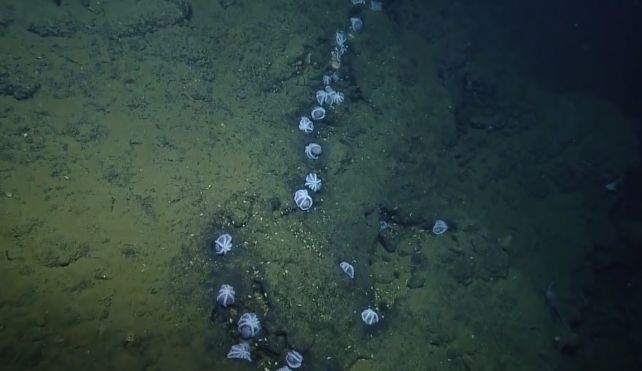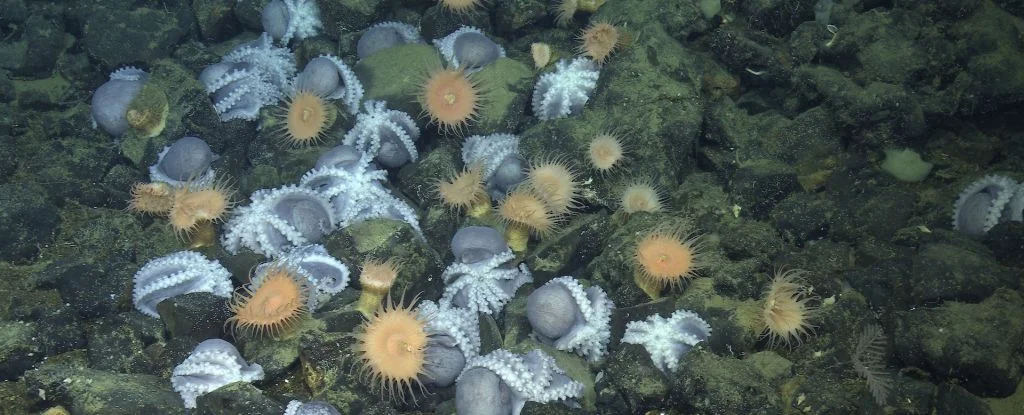On the Davidson seabed off the coast of California lies a world of wonders on the seabed. There, thousands of “pearl” octopuses gather in the shimmering heat seeping from the volcano below (Musoctopus intactus) to mate, nest and raise their eggs. Opened in 2018, the nursery is the most spectacular octopus nesting site ever discovered.
Now, after several dives to explore and observe the area, a team led by marine scientist James Barry of the Monterey Bay Aquarium Research Institute (MBARI) has discovered the appeal of this special place: heat from the volcano accelerates the development of eggs. increases the chances of survival.
“Thanks to MBARI’s advanced marine technology and our partnership with other local researchers, we were able to observe the Octopus Garden in extraordinary detail, which helps us understand why so many deep-sea octopuses congregate there,” says Barry. “These findings can help us understand other unique deep-sea habitats and protect them from climate influences and other threats.”
Octopus Garden seems to be in a somewhat odd place in terms of octopus physiology. It lies 3,200 meters (10,500 ft) below the ocean surface, in the permanent icy darkness of the Bathipelagic. However, the researchers counted 4,707 females nesting in a 2.5-hectare area in the center of the field; They estimated that there were about 20,000 male and female octopuses in the entire hatchery.
Octopuses, like many sea creatures, are cold-blooded; The average ambient temperature on the Seamount Davidson cliff, about 1.6 degrees Celsius (35 degrees Fahrenheit), slows their metabolism. At this temperature, the eggs of the cephalopods, which researchers refer to as “pearl octopuses” because of their iridescent shine, are expected to take five to eight years to hatch.
The researchers conducted 14 dives using a remote-controlled vehicle over three years, examining and documenting the octopuses in detail. In addition to distinguishing features such as scars, they carefully noted where the mother octopuses chose to nest and congregate on their eggs. The faint glow of the water on the sea crest was a clue as to why this place was chosen. This happens when warmer water mixes with colder water. This points to a previously unknown hydrothermal system.
They found that octopus burrows tend to cluster in crevices, and these crevices are places where heat seeps from under the seafloor, warming the water to a relatively pleasant 11 degrees Celsius (51 degrees Fahrenheit).

The team found that this temperature is more suitable for the octopus’ metabolism and egg hatching. By following the octopuses one by one, they found that the incubation period of pearl octopuses was shortened to about 21 months. The temperature accelerated the growth of embryos and the metabolism of mothers.
It is not clear whether heat is necessary for octopuses to build a nest, but it is clear that it is beneficial. The researchers say that shortening the incubation period significantly reduces the likelihood of being eaten by a predator, while incubating octopuses are still vulnerable and unable to defend themselves or escape, increasing their chances of long-term survival.
“The deep sea is one of the harshest environments on earth, but animals have come up with clever ways to cope with the cold temperatures, constant darkness and extreme pressure. Too long incubation periods increases the likelihood that the mother’s eggs will not survive,” says Barry. Source
Source: Port Altele
